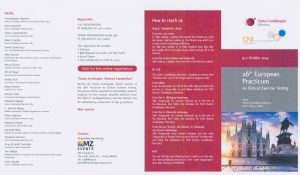Madonna R; University Cardiology Division, Pisa University Hospital and University of Pisa, Italy;
Alberti M; Biondi F;Morganti R; ,Badagliacca R; Vizza CD; De Caterina R;
European journal of internal medicine [Eur J Intern Med] 2023 Dec 01.
Date of Electronic Publication: 2023 Dec 01.
Background and Aim: Chronic thromboembolic pulmonary disease (CTEPD) is a progressive condition caused by fibrotic thrombi and vascular remodeling in the pulmonary circulation despite prolonged anticoagulation. We evaluated clinical factors associated with CTEPD, as well as its impact on functional capacity, pulmonary haemodynamics at rest and after exercise, and right ventricle (RV) morphology and function.
Methods: We compared 33 consecutive patients with a history of acute pulmonary embolism and either normal pulmonary vascular imaging (negative Q-scan, group 1, n = 16) or persistent defects on lung perfusion scan (positive Q-scan) despite oral anticoagulation at 4 months (group 2, n = 17). Investigations included thrombotic load, the Pulmonary Embolism Severity Index (PESI) score, functional class, N-terminal prohormone of brain natriuretic peptide (NT-proBNP), cardiopulmonary exercise test (CPET) and echocardiographic parameters at rest and after exercise (ESE), at 4 and at 24 months.
Results: Compared with group 1, group 2 featured a higher PESI score (p = 0.02) and a higher thrombotic load (p = 0.004) at hospital admission. At 4 months, group 2 developed exercise-induced pulmonary hypertension (Ex-PH) at CPET (p < 0.001) and ESE (p < 0.001). At 24 months group 2 showed higher NT-proBNP (p < 0.001), WHO-FC (p < 0.001), systolic (p<0.001) and diastolic (p = 0.037) RV dysfunction and worse RV-arterial coupling (p < 0.001) despite maintaining a low or intermediate echocardiographic probability of PH.
Conclusions: This is the first “proof of concept” study showing that patients with a positive Q-scan frequently develop Ex-PH and RV functional deterioration as well as reduced functional capacity, generating the hypothesis that Ex-PH could help detect the progression to CTEPD.


